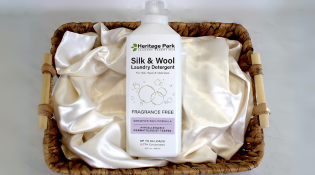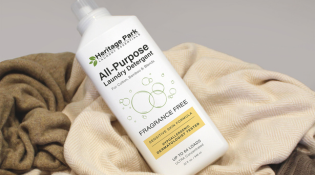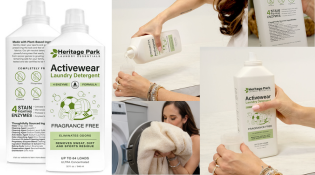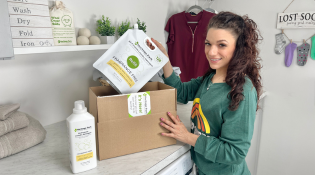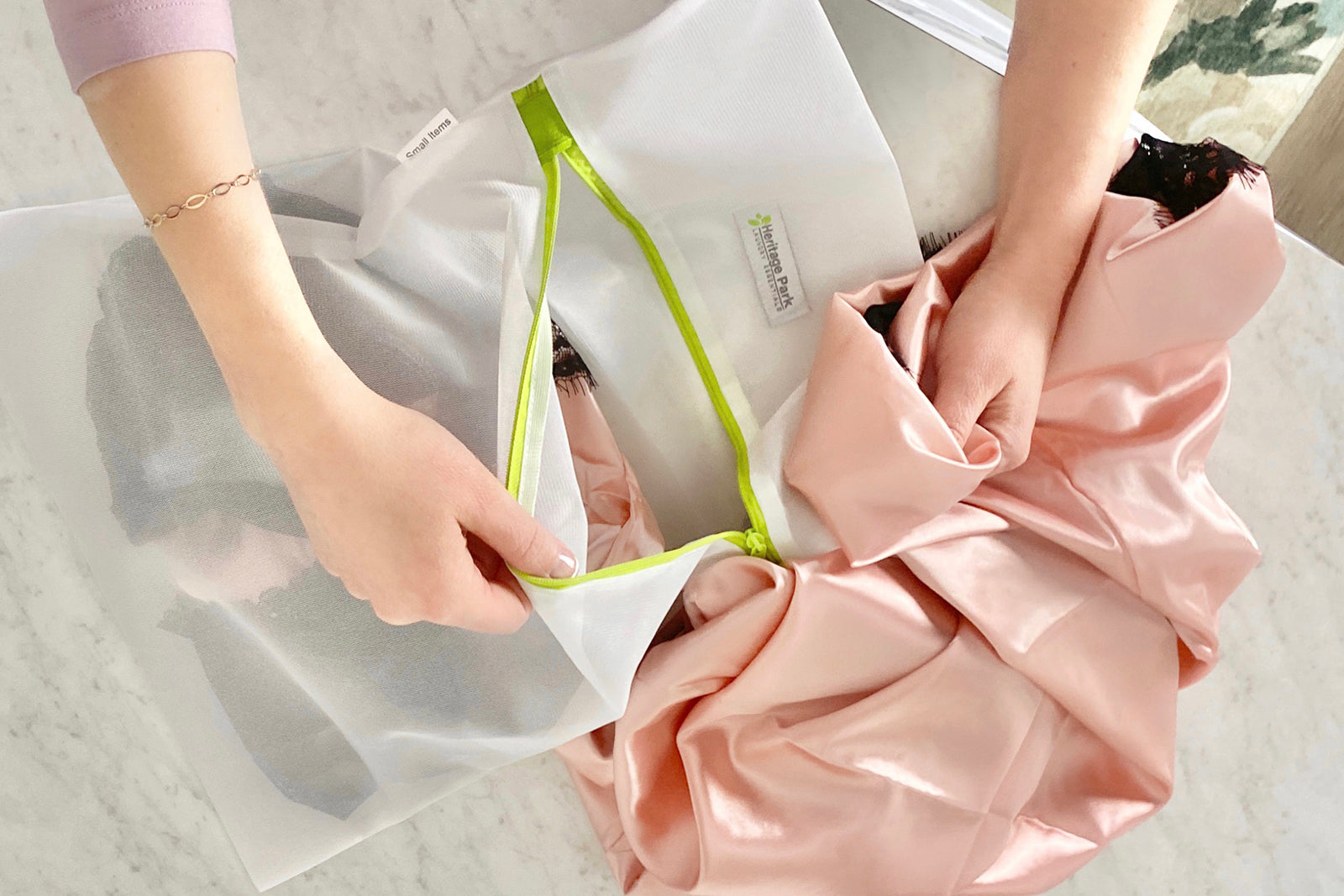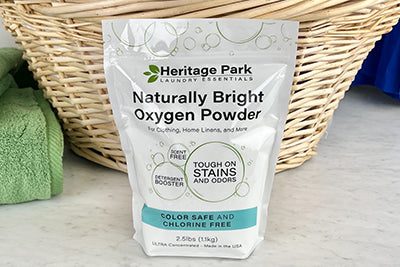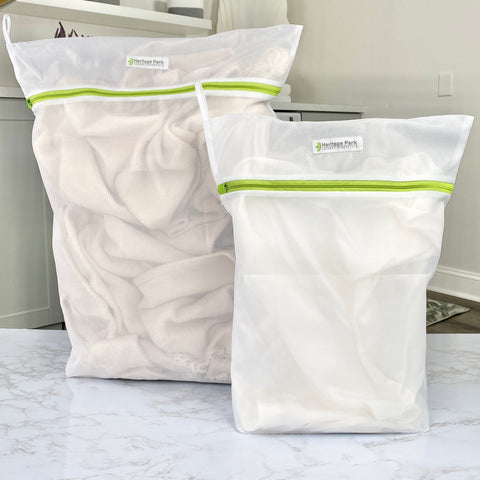Why You Don't Need Lanolin To Wash Wool
Like most things in life the answer is… it depends. Some wool detergents boast that they contain lanolin to condition washable wool. But most washable wool items do not need to be washed in lanolin. This article explains what lanolin is and discusses the very limited circumstances in which it should be used on washable wool.
Inside this Article:
- Lanolin in Detergent: Good for Washable Wool or Not?
- What is Lanolin?
- What Does Lanolin in Detergent Do to Washable Wool Garments?
- When Is Lanolin Okay to Use on Wool?
- Heritage Park Silk and Wool Detergent: Perfect for Washable Wool
- How to Hand or Machine Wash Your Wool Garments
- About Heritage Park Laundry Essentials
Lanolin in Detergent: Good for Washable Wool or Not?
When it comes to washing your favorite wool sweater, socks, or other apparel, our best advice is to go for it, but be careful. That means scrupulously reading the manufacturer’s care label and -- once you’re certain the wool garment is washable -- following these guidelines for optimal results. We also recommend choosing a gentle, pH-neutral detergent that is enzyme free and made for laundering natural fibers like a Wool Detergent from Heritage Park Laundry Essentials.
Lately, we’ve also fielded a handful of questions about lanolin, specifically whether a detergent containing lanolin should be used for washing wool. In most cases, lanolin isn’t necessary for washing your wool garments which is why we don’t include it in our wool wash. However, lanolin has become a bit of a buzzy topic in the world of fine laundry detergent. That’s why we’re taking a bit of a deeper dive on the subject. Read on to learn more about what lanolin is; how it functions in wool; and why it should be used only sparingly and in special circumstances.
What is Lanolin?
Have you ever pulled on a beautiful imported Irish- or Icelandic-knit sweater and noticed that it smelled a bit like sheep? That odor is the scent of lanolin! Lanolin is a natural wax produced by the sebaceous glands of sheep that helps to waterproof and protect their wool coats from the elements. The yarn used to make these traditional sweaters is minimally processed and retains a good bit of that lanolin; this serves as a weatherproof barrier that historically protected farmers and fishermen from rain, snow, dampness, and cold.
For most wool, however, the shearing, cleaning, and spinning process means extracting lanolin (wool grease) and other impurities. This is intentional, because, along with leaving a distinctive smell, pure lanolin creates a water repellent barrier that is not desirable for most garments. Along with making it difficult to dye, lanolin also counteracts one of wool’s most important properties: the ability to wick moisture away from the skin.

What Does Lanolin in Detergent Do to Washable Wool Garments?
Think of pure lanolin as a waxy barrier that helps make wool waterproof -- or at least water repellent -- by preventing it from absorbing moisture. This is an important feature of wool outerwear, or a garment like a heavy wool fisherman’s sweater. As a natural protein fiber, wool is also wonderful at wicking away moisture and helping to regulate body temperature; merino wool, for example, is a favorite material for technical and outdoor gear, especially base layers, because it is temperature regulating; breathable; moisture wicking; soft; and comfortable. These are essential properties for the comfort and feel of any wool garment that sits next to your skin, including sweaters, socks, lingerie, long underwear, or loungewear. Using a detergent with lanolin for these items would recoat the wool fiber and hamper the breathable, moisture-wicking properties that make wool so comfortable and cozy.
When Is Lanolin Okay to Use on Wool?
Keeping in mind that lanolin repels moisture, there are a few situations where it is acceptable to use it on wool, specifically to treat outerwear or other external layers (like those heavy fishermen’s sweaters). You can use a detergent with lanolin for washing these items (provided they are safe to wash) or even treat them after the fact with a lanolin spray. Of course, you will also find lanolin used in all manner of beauty and healthcare products, particularly skin cream; the waterproof barrier created by pure lanolin is wonderful for helping to protect and heal dry skin.
Heritage Park Silk and Wool Detergent: Perfect for Washable Wool
Choosing the proper detergent is the most important thing you can do to protect your wool garments in the wash. We recommend our Silk and Wool Detergent, a concentrated, gentle, pH-neutral formula that is enzyme-free to protect the integrity of delicate fibers. Our Silk and Wool detergent is made for all types of natural, protein-based fibers including silk, wool, cashmere, alpaca, and feathers. It cleans with powerful, plant-based ingredients and contains no harsh chemicals that can be irritating to sensitive skin, including phosphates, sulfates, chlorine, bleach, or optical brighteners. Our fragrance-free formula is also hypoallergenic and pediatrician- and dermatologist-tested. Our Silk and Wool detergent is also made without any lanolin; the gentle formula will not strip or damage delicate wool, so there is never a need to recondition it.
How to Hand or Machine Wash Your Wool Garments
To hand wash wool sweaters, socks, lingerie or other garments, fill a utility tub or sink with lukewarm water; add a capful of our wool wash; and swish with your hand to dissolve. Turn the item inside out and submerge in the tub. Gently agitate the item around in the water, do not aggressively scrub the fabric. If you are hand washing wool socks, you can be a bit more aggressive or leave them to soak a bit longer. Thoroughly rinse your item in cool water and squeeze out excess moisture (do not wring!).
If you are machine washing wool, follow these simple steps:
- Turn your item inside out (if possible) and place it inside a fine mesh laundry bag. This protects clothing and socks from pilling and potential damage inside the machine. You can put several socks inside a single bag.
- Add the appropriate amount of Silk and Wool Detergent.
- Use a wool or delicate wash cycle.
- NEVER use fabric softener or bleach on wool.
- If your items are very wet at the end of the cycle, do not wring them out. Instead, roll inside a clean white towel to absorb extra moisture.
Lay your wool items flat to dry on a clean towel or drying rack. Never put wool items in the dryer, as they will shrink with any amount of heat.
About Heritage Park Laundry Essentials
At Heritage Park, caring for fine fabric is our passion. As lifelong collectors of luxury sheets, towels, and cloths, we found many commercially available "gentle detergents" either damaged our fabrics or didn't get the job done, leaving stains. We knew we could do better. So we developed a formula with the perfect balance of powerful -- yet safe -- ingredients designed to remove tough, set-in stains while remaining gentle on luxury linens. Please connect with us at (800) 977-1841 or visit our store or email us with any product feedback or cleaning questions.


